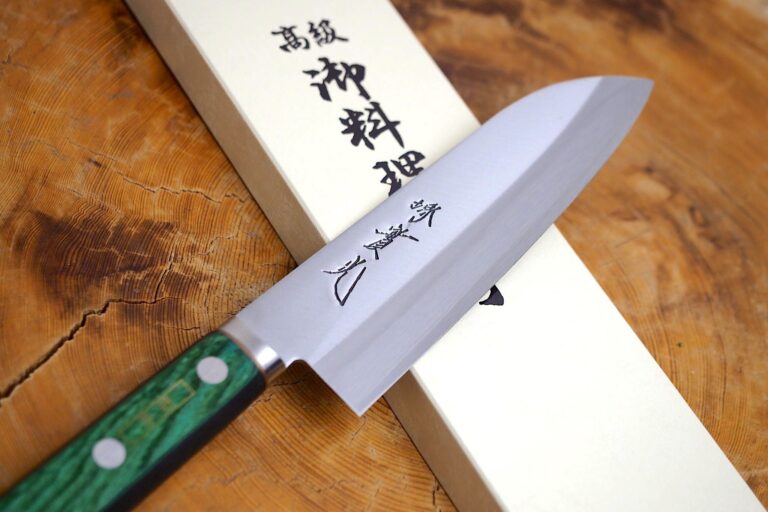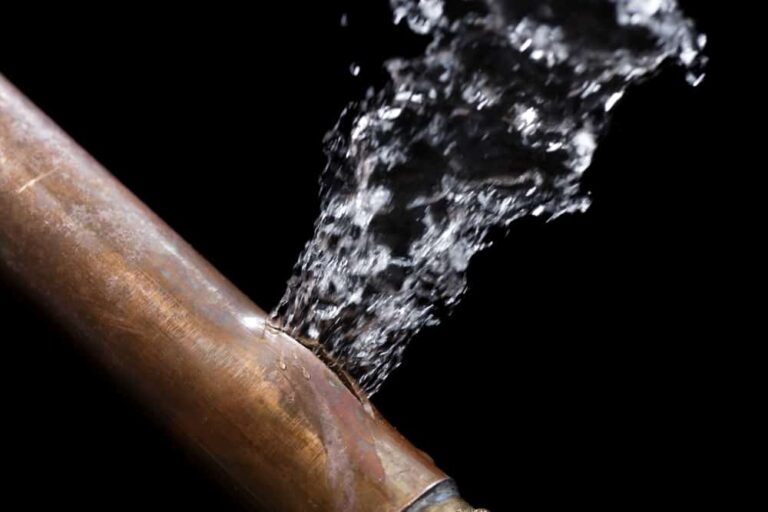Blue steel knives have garnered a reputation as the epitome of culinary excellence. Known for their remarkable sharpness and durability, these knives are a symbol of high-end kitchenware. But with prestige comes a high cost.
In this blog post, we’ll explore the reasons behind the premium pricing of blue steel knives. From the unique properties of blue steel to the meticulous craftsmanship involved in their making, we will delve into the factors that contribute to their mystique and high price tag.
What is Blue Steel?
Blue steel, a term often synonymous with exceptional quality in cutlery, refers to a type of high-carbon steel originating from Japan. This metal is known for its superior strength, sharpness, and ability to hold an edge.
Its composition includes chromium and tungsten, adding to its durability and resistance to wear. These knives are a product of centuries-old Japanese blacksmithing traditions, reflecting a heritage of precision and excellence. This unique blend of materials and history sets the stage for understanding the value of these remarkable knives.
The Craftsmanship Behind Blue Steel Knives
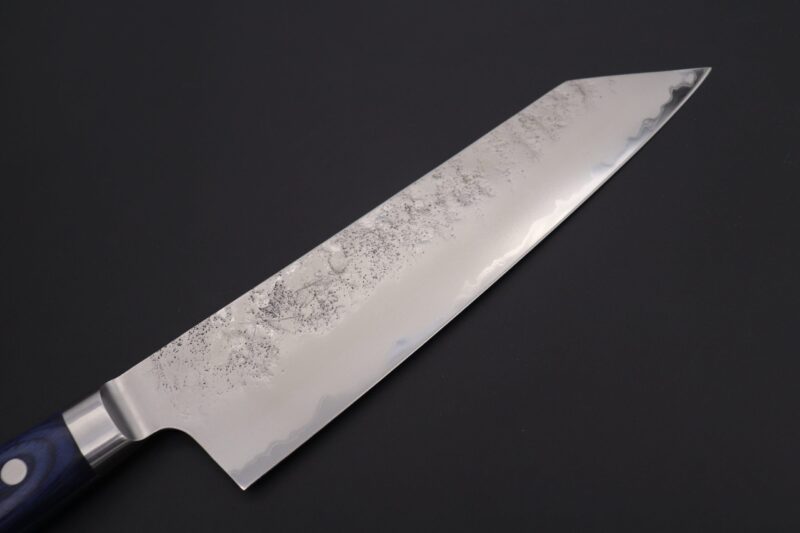
The creation of a blue steel knife is an art form, requiring skilled craftsmanship and years of training. These knives are hand-forged, a process involving the meticulous shaping and tempering of steel.
This traditional technique, passed down through generations, ensures each knife’s unique quality and performance. The hand-forging process, while time-consuming, contributes significantly to the knife’s overall quality, making each piece not just a tool but a work of art. Read more if you want to learn further about blue steel knives.
The Role of Carbon Content
The exceptional performance of blue steel knives is largely due to their high carbon content. Carbon enhances the steel’s hardness, allowing for a sharper and more enduring edge. However, increased hardness can lead to brittleness, making it more susceptible to chipping.
Master knife-makers skillfully balance these properties, crafting a blade that is both incredibly sharp and durable. This delicate balance is crucial in producing a knife that can withstand the rigors of professional use while maintaining its exceptional edge.
Superior Edge Retention
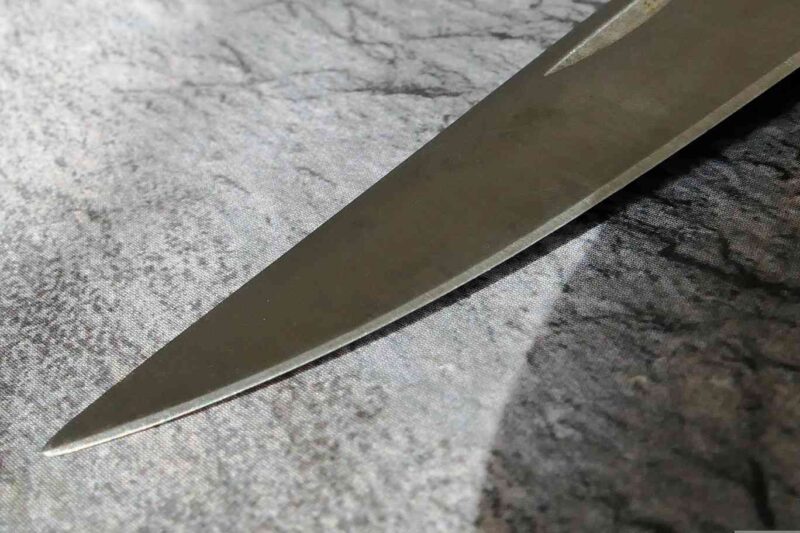
One of the most prized features of blue steel knives is their superior edge retention. This means the blade remains sharp for longer periods, reducing the need for frequent sharpening.
This characteristic is particularly appealing to professional chefs who require consistent performance in high-paced environments. The longevity of the knife’s sharpness is a testament to the quality of the iron and the expertise involved in its crafting.
The Unique Patina
Over time, blue steel knives develop a patina, a unique coloring on the blade’s surface. This patina is not just an aesthetic feature; it’s a sign of a well-used and cherished tool.
Each knife’s patina is unique, telling the story of the dishes it has helped create. For many enthusiasts, this evolving appearance adds to the knife’s appeal, making it not just a kitchen utensil but a personal heirloom.
Maintenance and Care
Proper maintenance is crucial for preserving the quality of blue steel knives. These knives require regular sharpening and must be kept dry to prevent rust. Owners should use a whetstone for sharpening and store the knife in a dry place.
Proper care ensures the knife’s longevity and performance, making it a worthwhile investment for both professional chefs and culinary enthusiasts.
The Rarity of Blue Steel
Blue Steel’s limited availability adds to its exclusivity and cost. The production of blue steel knives is not a mass-market operation; it’s a specialized craft. The scarcity of skilled artisans capable of producing these knives, combined with the time-intensive manufacturing process, limits the number of these knives available in the market.
This rarity is a significant factor in the knives’ high price. Additionally, the specific regions in Japan where these knives are made further contribute to their scarcity and mystique, as the knowledge and skill required are localized.
The Role of Brand and Reputation
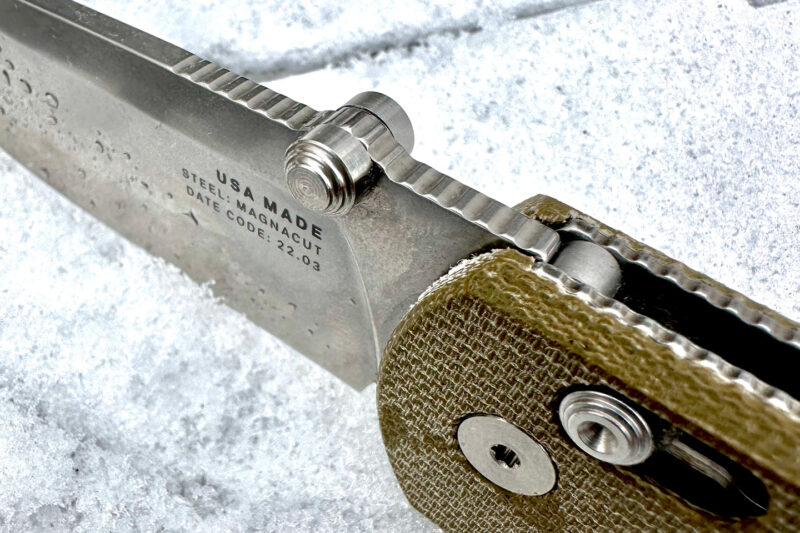
The brand and reputation of a knife maker can significantly impact the price of blue steel knives. Renowned knife makers, often with years of experience and accolades, command higher prices for their creations. Their reputation for quality and craftsmanship assures buyers of the knife’s value, contributing to the higher cost.
These brands not only sell a product but also a piece of cultural heritage and craftsmanship. Buyers often see purchasing these knives as an investment in a tradition of excellence, adding to their appeal and value.
Comparing Blue Steel to Other Materials
When compared to materials like stainless steel, the blue one stands out for its sharpness and edge retention. However, blue steel requires more maintenance to prevent rust and keep the edge sharp. Stainless type, while less prone to rust and easier to maintain, does not offer the same level of sharpness or edge retention.
Each material has its advantages and disadvantages, catering to different needs and preferences. Blue steel’s unique properties make it a preferred choice for professionals and enthusiasts who prioritize performance over maintenance.
Real-World Cost Examples
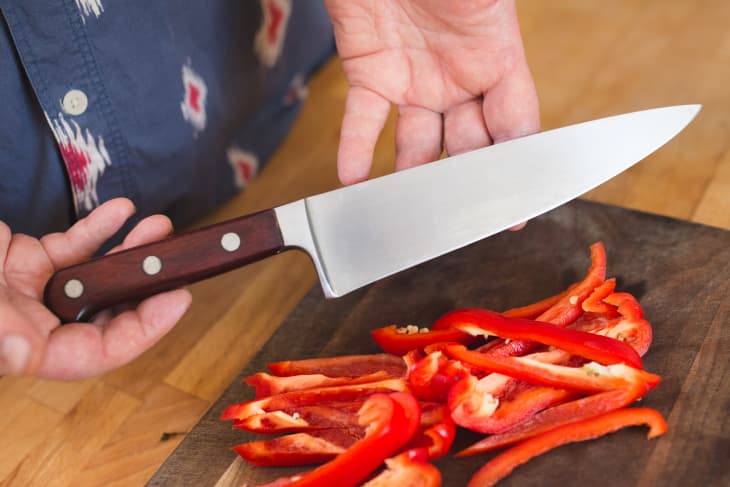
Blue steel knives can range significantly in price, often costing several times more than regular knives. For instance, a high-end blue steel chef’s knife might cost several hundred dollars, compared to a standard stainless steel knife at a fraction of that price.
This price difference reflects the craftsmanship, quality, and performance of blue steel knives, making them a luxury item in the culinary world. The high cost also reflects the cultural and artistic value embedded in each knife, making them more than just cooking tools but symbols of culinary art.
Conclusion
Blue steel knives are expensive due to their unique material properties, skilled craftsmanship, and the heritage they embody. Their superior performance, unique aesthetic qualities, and the painstaking process of their creation contribute to their mystique and high price tag.
While not for everyone, for those who appreciate the art of cooking and the tools that enhance it, a blue steel knife is more than just a kitchen utensil; it’s a piece of culinary history.

